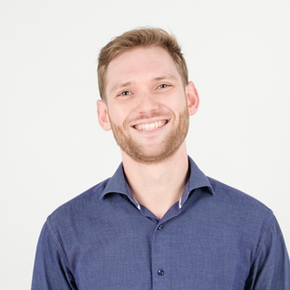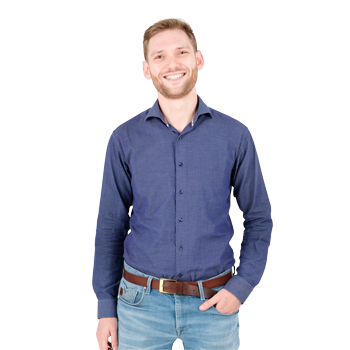In agriculture, food production, and processing industries, valorization is crucial. It refers to increasing the value, usefulness, or profitability of a product. In the meat processing industry, this means efficiently utilizing every part of the animal to maximize its value. This process involves numerous variables and is highly complex. In collaboration with meat producer Vion, CQM developed an application called VIPS (Vion Planning System), which transformed Vion’s planning process into a data-driven system.
Vion Food Group's largest production site in the Netherlands is located in Boxtel, where the company produces meat, meat products, and plant-based alternatives for both national and international retailers, foodservice companies, and the processed meats industry. Due to its scale and demand-driven supply chains, Vion can supply large quantities of raw materials tailored to market demand. At the Boxtel site, 2,700 employees work in two shifts to ensure the highest quality and safety of meat products, maximizing the valorization of every part of the animal.
A Complex Puzzle

Every day, Vion faces the challenge of planning how to process the supply to ensure the optimal transformation of each piece of meat into an end product that delivers the maximum yield. This puzzle is highly complex, explains Luuk van Boxtel, Head of Planning at Vion Boxtel: “We don’t produce a standardized product like a bottle of Coke. Instead, we deal with varying supplies from different vendors and a constantly changing market demand. Numerous variables determine how, when, and on which production line the meat should be processed. Manual planning was becoming increasingly difficult, so we aimed to develop a smart, data-driven application.”
Matching and Scheduling
To understand the valorization process, it’s essential to explain the two key steps involved. First, after slaughter, each pig is automatically scanned, and each part of the animal is classified by value and assigned to customer orders based on daily requirements. This step is called ‘matching.’ The second step is ‘scheduling,’ which involves determining what should be processed on which production line and when. Boxtel has dozens of production lines, each staffed by approximately 20 employees. Every worker must be assigned specific tasks while maintaining the continuity of the line, ensuring minimal changes or stoppages. Planning for both matching and scheduling takes place the evening before production, presenting a massive puzzle.
Under Pressure
 Previously, 14 planners at Vion Boxtel handled the matching and scheduling manually. “Valorization was often compromised,” says Max Houben, Product Owner of the Innovation Hub at Vion. “Decisions were frequently made to meet daily customer orders or produce large batches, which wasn’t always the best choice for valorization. We also have standardized processing methods at Vion, but these were often bypassed because planners were accustomed to handling certain customer orders differently. This resulted in discrepancies between what we thought we were selling and what was actually produced. Given the complexity of valorization and the need for uniformity, our request to CQM was clear: make our planning data-driven."
Previously, 14 planners at Vion Boxtel handled the matching and scheduling manually. “Valorization was often compromised,” says Max Houben, Product Owner of the Innovation Hub at Vion. “Decisions were frequently made to meet daily customer orders or produce large batches, which wasn’t always the best choice for valorization. We also have standardized processing methods at Vion, but these were often bypassed because planners were accustomed to handling certain customer orders differently. This resulted in discrepancies between what we thought we were selling and what was actually produced. Given the complexity of valorization and the need for uniformity, our request to CQM was clear: make our planning data-driven."
VIPS – Vion Planning System
“Together with Vion’s planners and specialists, we mapped out the variables,” says Arno van den Eijnden, Senior Consultant at CQM. “Vion provided the database containing revenue data from different classifications and standard processing methods. Using this data, we developed the VIPS application (Vion Planning System). The application - developed using AIMMS software, a longstanding technology partner of CQM - optimally matches supply with sales orders in a single run and generates a production schedule for the following day. By following the plan, maximum valorization is achieved.” VIPS also considers production feasibility. For instance, while it used to be ideal to process a customer order on a single production line, VIPS can now split the order across multiple lines if it benefits valorization, ensuring optimal efficiency and capacity across lines.
Higher Yields
VIPS has been fully operational at Vion Boxtel for several months. So, does the system indeed deliver higher valorization? Max Houben says, “We first ran a pilot at our smaller production site in Apeldoorn, where results significantly exceeded our business case expectations. In Boxtel, we are still assessing the full impact, but we expect substantial improvements. Additionally, we’re already seeing more uniformity in our processes. VIPS uses Vion’s standard processing methods, so we’re achieving closer to our target yields than before, ensuring maximum utilization of each part of the animal.”

From left to right: Max Houben (Vion), Arno van den Eijnden (CQM), Luuk van Boxtel (Vion)
A New Way of Working
Has working with the new planning application freed up time for the planners? “Our work has changed,” says Luuk van Boxtel. “When you adopt a data-driven approach, you need to maintain and validate the data, which now takes up more time. Additionally, we’re still in the early stages with VIPS, so adjustments are often needed, requiring significant effort from the planners. We are also adapting to this new way of working.” Arno van den Eijnden adds, “VIPS isn’t a magic button. Planners are still essential for making decisions, especially when supply differs from expectations or when adjustments to sales orders or production times are needed. It remains a continuous coordination process.”
Opportunities
Max Houben is pleased with the collaboration with CQM: “CQM has been a valuable partner from start to finish, consistently challenging our business processes constructively. VIPS is designed to plan activities one day in advance, but with the knowledge passed on by CQM, we aim to develop a longer-term planning tool to further improve our processes.” Arno van den Eijnden sees additional opportunities for data-driven optimizations at Vion: “Internal logistics, transportation planning, demand and supply forecasting models, bottleneck analysis, and simulations—all offer opportunities for further valorization. We’re eager to tackle these challenges.”
Do you also want to streamline your processes for greater results?
CQM helps you with complex issues through data-driven solutions. Contact Arno van den Eijnden today; we’re happy to help!
Stay up to date with the latest news from CQM
Follow us on LinkedIn or sign up for our digital newsletter.


